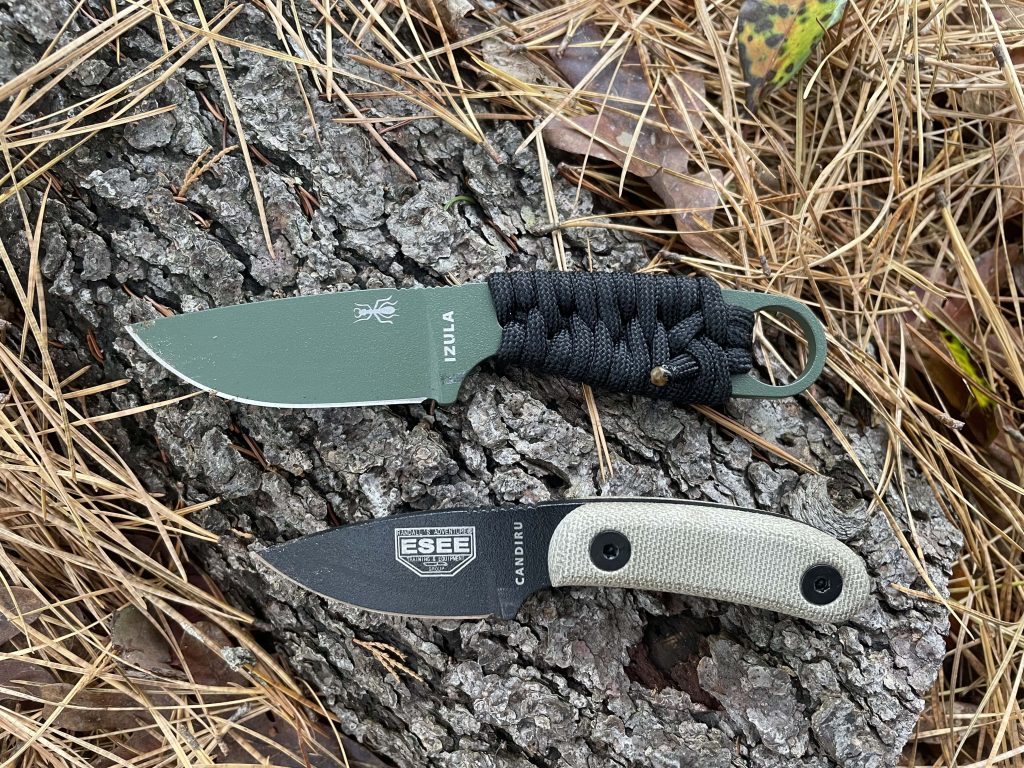
“Two is one and one is none.” ~Anonymous
ESEE makes some seriously tough knives, from big things like the Junglas to insanely little knives like the Candiru and Izula.
On that note, the latter two are some of the smaller commercially available knives intended for EDC. Yet, despite their respective diminutive statures, they are very capable little blades.
They’re also in the same general class of “small fixed blade knife that’s perfect for EDC and a wide range of other disciplines.”
But which is right for you?
I own and frequently carry both. I keep a Candiru clipped to my upland jacket and carry it commonly when hunting in the fall; I have an Izula scout rigged that I carry commonly in the summer when I’m fishing or working in the yard.
Both are excellent knives, and each has some unique advantages over the other. I’ll offer some personal insight gained from experience.
First, What’s the Same About Them?
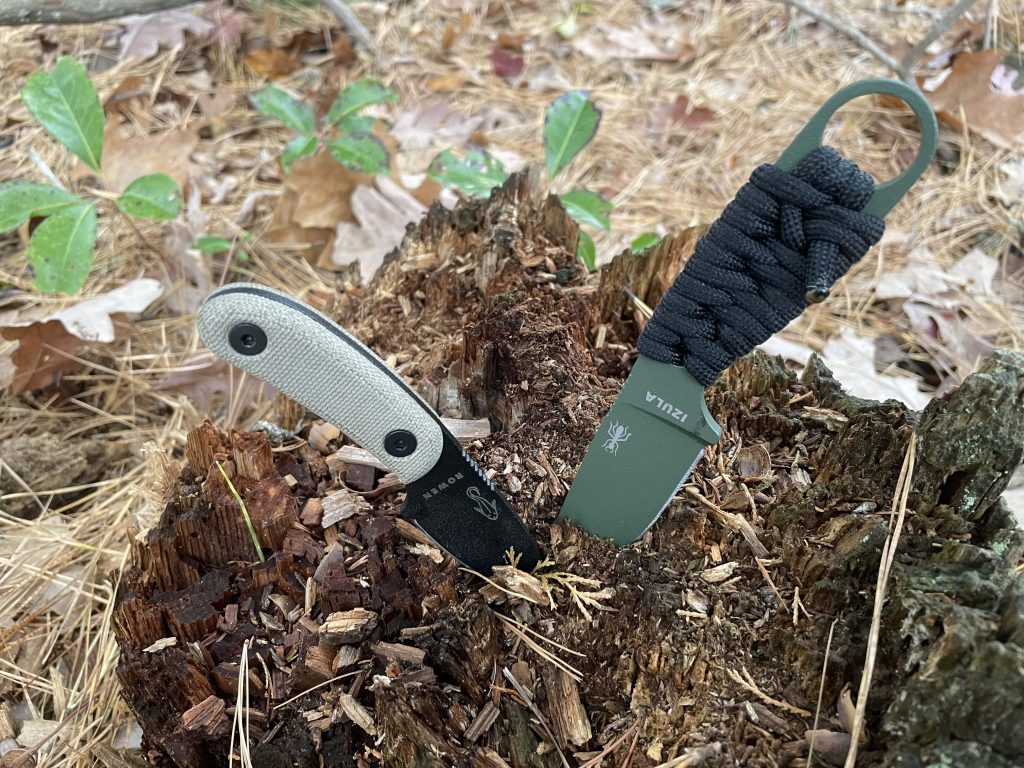
Both the ESEE Izula and Candiru are really small knives. The Izula is 6.25” overall, with a 2.63” blade and weighs 2 ounces even. The Candiru is 5.13” with a 2” blade and weighs 1.7 ounces.
Both are made from 1095 steel with a 55-57 Rockwell Hardness rating. The steel will rust, so be aware of that. That is one of the biggest drawbacks associated with both of these knives (which I won’t cover below since it is not unique to one knife). Both also come with MOLLE-compatible sheaths that can be worn on the belt or rigged in a variety of other ways.
In addition, to protect the rust-prone steel, both are treated with a powder coating. Also, unless you expressly buy a kit that contains scales, the Izula and the Candiru will ship to you with the skeletonized tang exposed.
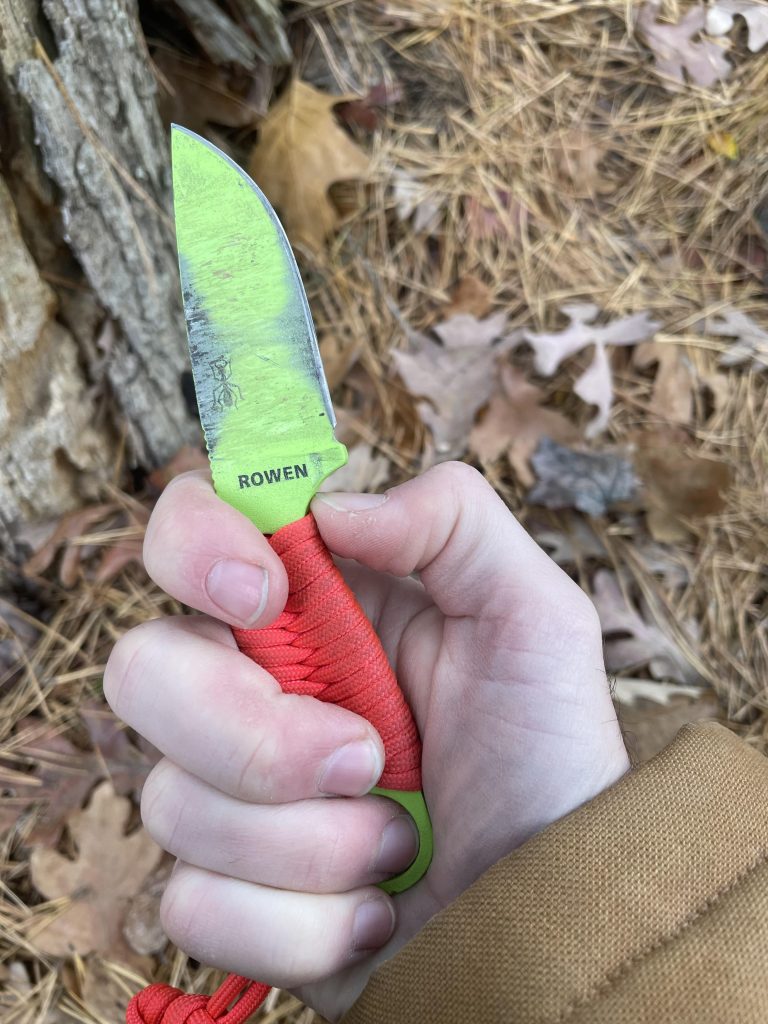
Without scales, both of these knives are really compact, with very thin profiles. They are very easy to carry discreetly.
So, let’s get into what makes each of these knives unique, despite their many similarities.
ESEE Izula: Advantages
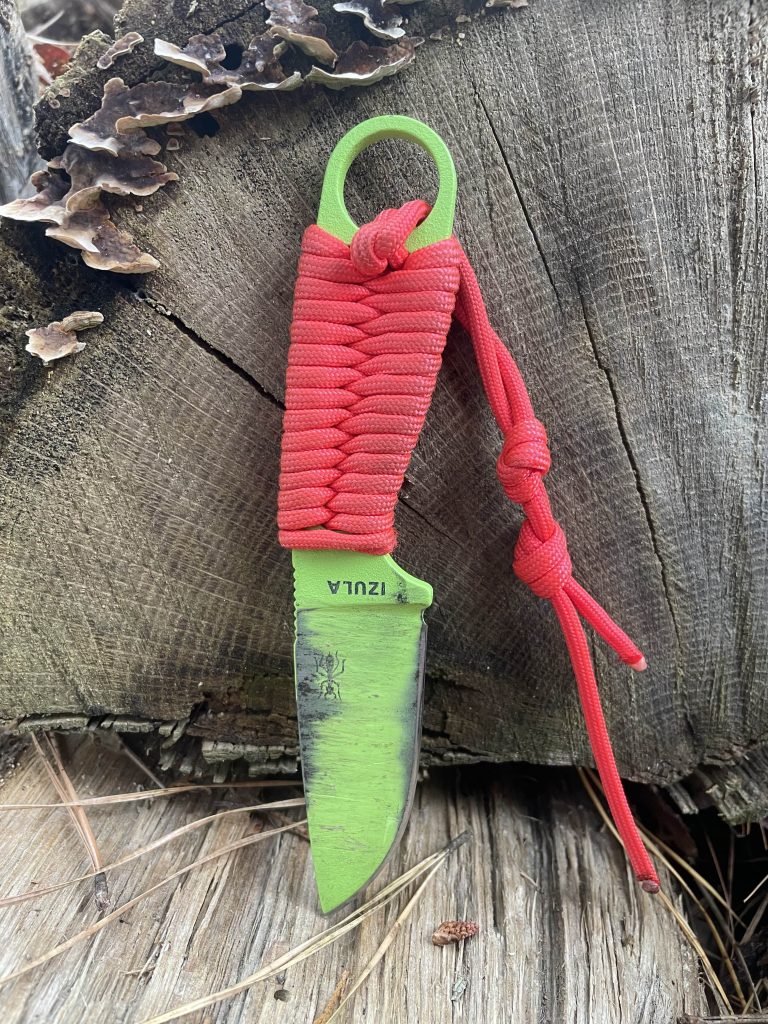
There are a number of things the Izula has going for it:
Obviously, this is the larger of the two knives. It has a longer blade, which means that for bigger jobs it is better. For instance, it’s easier to baton through wood with an Izula than a Candiru.
Because it is larger, the handle is longer, too. Most users with larger hands will find it uncomfortably small, but it is invariably larger and more comfortable than the Candiru.
On that note, this does not feel like a small knife, particularly with respect to the blade. I don’t know how to explain it, other than this. Get your hands on one and you will see what I mean.
The longer edges means that the Izula makes longer, sweeping cuts more easily, and with less fatigue on your part.
Drawbacks
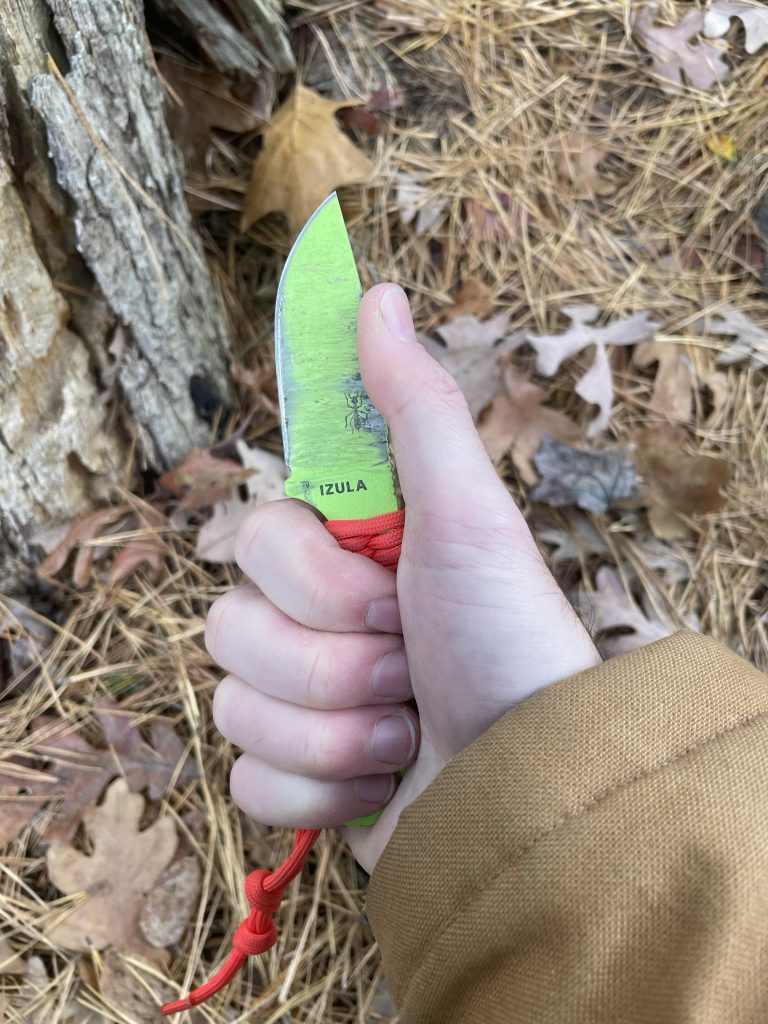
I love my Izula, but in the spirit of fairness I must admit there are some areas in which it loses out to the Candiru:
Obviously, it’s larger, longer, and heavier. If a smaller knife is your priority, then the Candiru is categorically better.
When using this knife for rough work, like carving, draw cuts, batoning or any sort of woodwork, the skeletonized handles are very uncomfortable in the grip. The knife is much more ergonomic when you wrap the tang with cordage or add Izula scales.
ESEE Candiru: Advantages
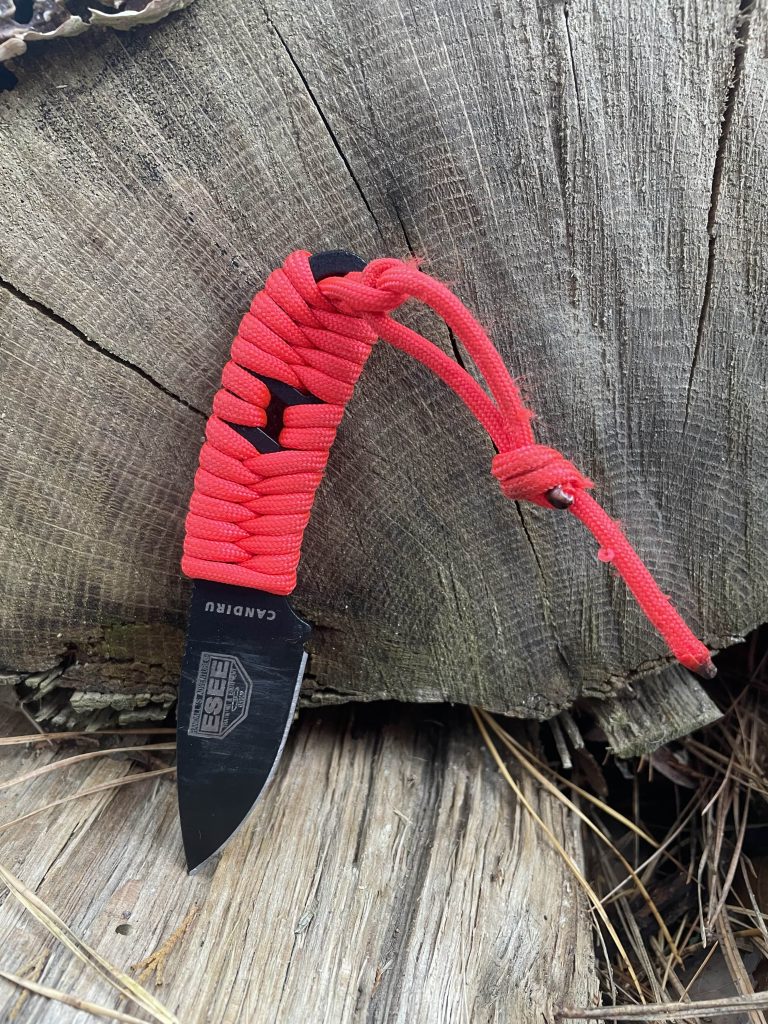
Now that we’ve covered some of the relative advantages of the ESEE Izula, let’s put the Candiru under the microscope.
This is the smaller knife. If compactness, weight, and discretion are the most important factor to you, the Candiru wins. It is very easy to carry discreetly and it can be fit in a small pocket.
Despite the fact that the blade is small, it has a generously curved belly and makes short slicing cuts well. I have cleaned birds and fish with my Candiru and it handles beautifully, especially in tight quarters (such as in the cavity of a trout).
Drawbacks
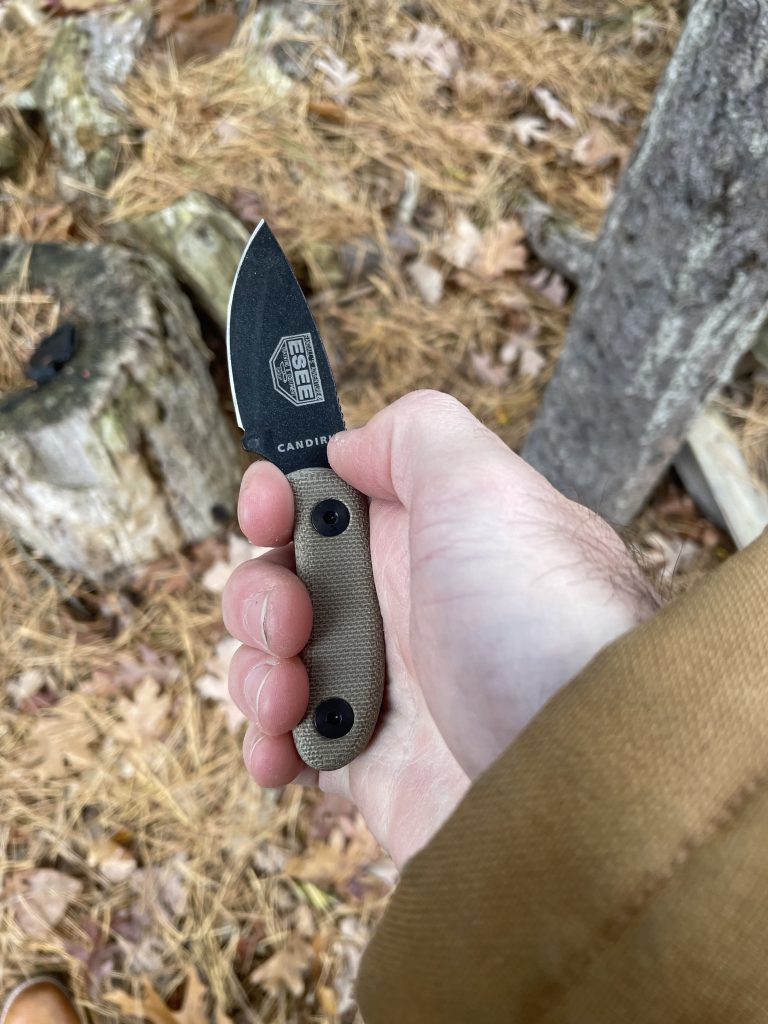
While I have a special place in my heart for the ESEE Candiru I carry, there are some confessions I need to make:
The handle is ridiculously small, even when outfitted with scales. It is downright uncomfortable in some cases, even for me, and I don’t have the biggest hands.
The blade of the knife is too small for most camp tasks. Even though this thing is tough enough to prepare firewood (for instance, by batoning) it can only be used with rounds smaller in diameter than the length of the blade, and those are already small enough to burn whole.
While the blade is good for short sweeping cuts, the length of the edge somewhat limits the utility of the blade. For instance, sometimes I need to cut through thorn vines when upland hunting, and I use my Candiru for that; I would benefit from a larger blade half the time.
That being said, there are some things you can do to mitigate these drawbacks. For instance, you can improve the handle and grip of the knife by adding a paracord wrap to the tang of a Candiru, you can soften the edges and extend it a bit, especially if you leave a little tail of paracord on the end.
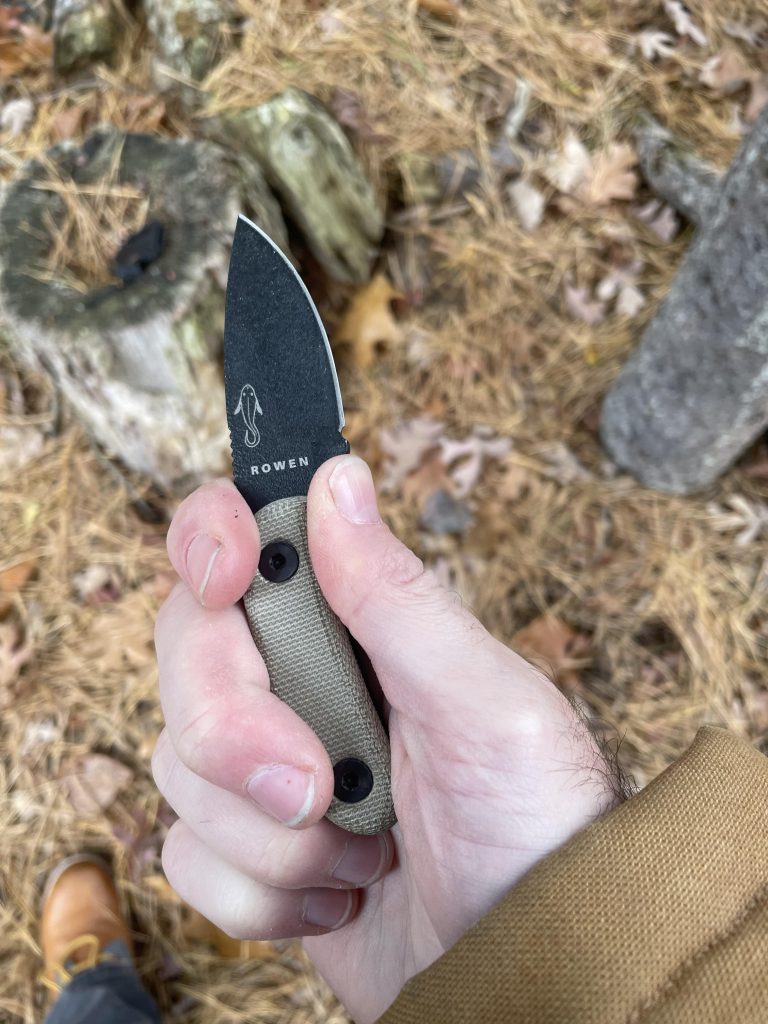
Get an Izula If…
Ultimately, it comes down to size. If you need a bigger knife for bigger jobs, get an ESEE Izula. The price differential is minimal.
Get a Candiru If…
On this end of the spectrum, it’s all about size and weight. There are things the Izula can do that the Candiru can’t, but the one thing the Candiru is, is smaller. If you need a really compact, light, easy-to-conceal fixed blades, there are few better knives than the Candiru, bar none.
…Or Get Both
When the dust settles, the truth shines through: I have, carry, and routinely use both an Izula and a Candiru (actually, several). They are both very useful knives and I can confidently abuse them both without fear that they will break.
If you can spare the expense, get yourself one of each. You know, two is one…
Stay sharp.
~The Eclectic Outfitter